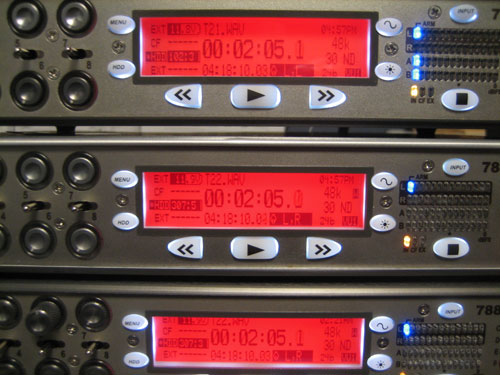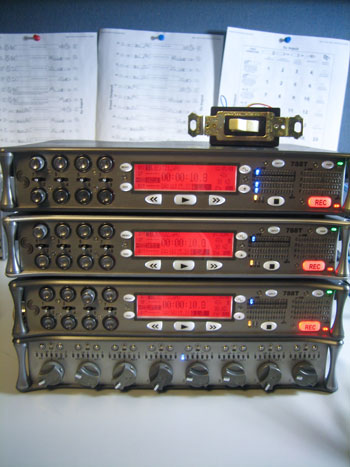Linking Multiple 788T Recorders for Simultaneous Recording
When 8 inputs and 12 tracks aren't enough, multiple 788T recorders can be connected for multi-unit recording. The note below describes the process of linking three 788T recorders together for a total of 24 inputs and 36 tracks.
Requirements:
- 3 - 788T digital recorders
- 3 - CL-1 Remote Control Interfaces (with the included RJ-12 cable)
- 3 - XL-LX LEMO®-5 to XLR-M and XLR-F cables
- 3 - XL-BNC word clock cables
- 1 - single pole, single throw toggle switch
- understanding of the 788T Setup Menu and it's controls
Note: This configuration assumes Free Run time code, and firmware revision v1.60 on each of the 788T recorders. If not, please update all recorders to the latest firmware.
Cable Interconnection
Arrange the recorders for easy cable connection between the output panels. A nice tall stack is usually best. In the example below, the top recorder will be the source recorder, sending time code and word clock data to the synced (middle and bottom) recorders. "Daisy chain" the XL-LX cables, connecting the TC Out (XLR-M) to the next cables TC IN (XLR-F) Connect the LEMO-5 of the XL-LX cables to the time code input of each recorder. The first cable in the chain will connect to the source recorder, the next in the chain to the first sync (middle) recorder, and the last to the second sync (bottom) recorder. Connect the XL-BNC cable from the word clock Out of the source recorder to the word clock In of the middle, sync recorder. Then connect the second XL-BNC cable from the word clock out of the middle, sync recorder to the word clock input of the second sync recorder. Next, connect each of the CL-1's to the C. Link In of it's respective recorder. Connect three wires from the each of the three CL-1 ground pins (pin-7) to one side of the switch. In this example, Red, Yellow and Black are connected to ground. \ Connect, three more wires to the other side of the SPST switch. Connect each of these wires goes to pin-1 of each CL-1.
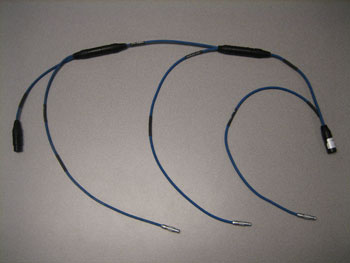
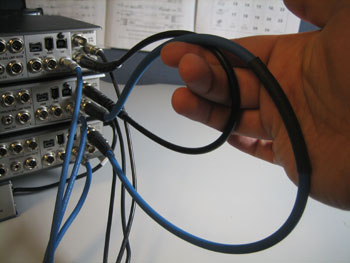
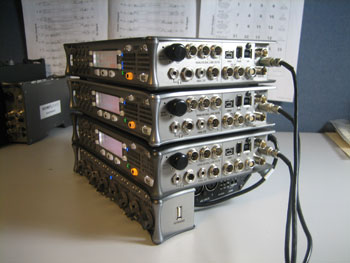
multi788t-stack 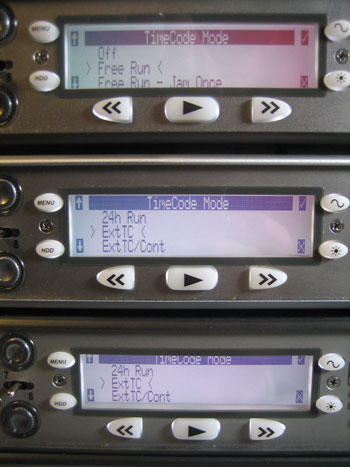
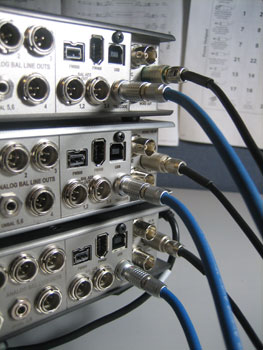
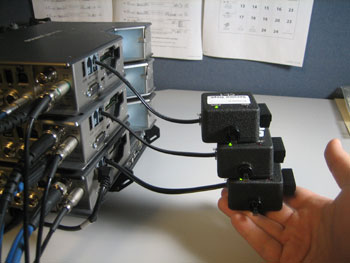
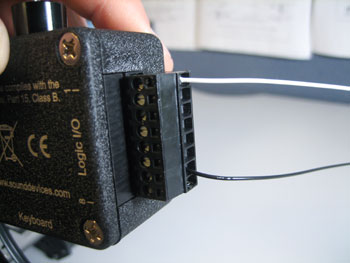

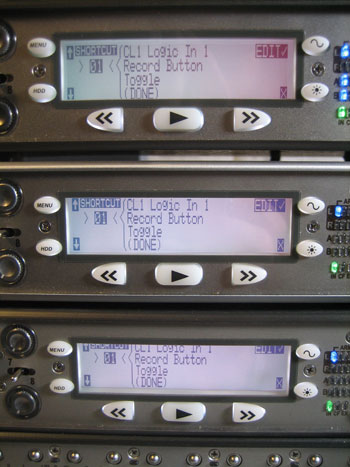
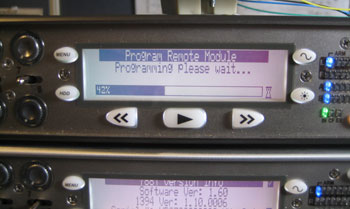
Menu Settings
Verify that each recorder is running the same (Preferably the latest) version of firmware and that they are set to identical sampling rates, bit depth, and file formats. Make certain all settings affecting file names are set appropriately so that corresponding files from the different recorders can be associated later on. To avoid duplicate file names, have unique, but similar Scene Names for each of the three recorders. This can be accomplished from menu item 8) Rec: Scene Name/Number. For instance, with the scene name "788T-X," where X is the recorder number, set on all recorders your associated file names would read 788T-A01.wav (source recorder), 788T-B01.wav (first sync recorder), and 788T-C01.wav (second sync recorder) Repeat the following steps on each 788T: In Setup Menu number 88) CL-1: Re-program follow the prompts to update all CL-1's to v1.75 code. In Setup Menu number 87) Keyboard/Logic In: Assign give Shortcut 01 a setting of CL1 Logic In 1 > Record Button > Toggle. In Setup Menu number 5) Rec: Sync Reference specify the sync reference for each recorder. This is essential for maintaining sample-accurate sync between recorders. Set the source recorder to Internal, and the sync recorders to Wordclock Input. In Setup Menu number 41) Timecode: Mode set the source recorder to Free Run, and the sync recorders to Ext TC. Exit the Set Menu and you will now see all recorders time code running in unison. Also their sampling rates, bit depths, and frame rates should all be identical. The sync recorders should have a "W" just to the right of the sample rate on the LCD to indicate that wordclock is their sync reference source. Make certain that input routing and track arming are set correctly...then throw the switch. Here's a closer look: The units are now recording simultaneously. When the resulting files are imported into an editors timeline, they will all be synchronous.
Additional Notes
- While three recorders can be connected for simultaneous recording, they cannot be linked for synchronous playback. During playback, 7-Series recorders always use their own internal clock source; they cannot accept external clock for playback.
- Files from each of the recorders are recorded to its own recording medium.
- Some editing environments have difficulty importing multiple polyphonic WAV files. Make certain the editing environment can import three separate 8-12 track files onto the timeline.
- If polyphonic WAV files were recorded, but the editing application requires that they be monophonic for import, convert them using Sound Devices Wave Agent Software Utility.
